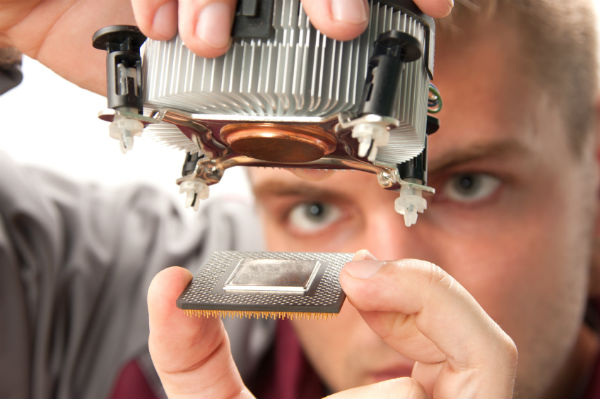Latest Articles
12.21.2012What Can Rendering Service Market Get From Cloud Computing?
12.20.2012Penetrating the Japanese Social Gaming World With the Help of Japanese Social Gaming Companies
12.19.2012Cloud-Based Rendering – the Logical Next Step for Render Farms
Archives

Call 855-466-4678
 Any large cloud vendor would have several data centers located in many different parts of the world. Between all of these data centers, there would be tens of thousands of disks, CPUs, RAM chips and networking devices. All of this equipment would be of differing vintage. Even if all data centers started off with identical equipment (which is seldom the case since they do not get built all together), over time, they would be subject to differing schedules of hardware maintenance and replacement of unserviceable components. Therefore, with the passage of time, even the most strictly managed data centers will tend to become heterogeneous in nature.
The end result of this variation in equipment is that differences in performances begin to appear for different cloud instances. Since cloud usage is typically charged over the hour (per minute charging is also emerging now), if you are able to move your application to a cluster with higher performance, you can achieve significant savings. The question is how to find clusters that are faster and more efficient.
Recent research at Aalto University Finland and Deutsch Telekom Laboratories, Germany focused on understanding hardware variations between data centers of the same vendor and studied the performance variation between various instances. While they studied a global vendor offering PaaS services, the results would be applicable to all large vendors. (It is possible that small cloud computing vendors may be able to have a greater degree of similarity of hardware).
Any large cloud vendor would have several data centers located in many different parts of the world. Between all of these data centers, there would be tens of thousands of disks, CPUs, RAM chips and networking devices. All of this equipment would be of differing vintage. Even if all data centers started off with identical equipment (which is seldom the case since they do not get built all together), over time, they would be subject to differing schedules of hardware maintenance and replacement of unserviceable components. Therefore, with the passage of time, even the most strictly managed data centers will tend to become heterogeneous in nature.
The end result of this variation in equipment is that differences in performances begin to appear for different cloud instances. Since cloud usage is typically charged over the hour (per minute charging is also emerging now), if you are able to move your application to a cluster with higher performance, you can achieve significant savings. The question is how to find clusters that are faster and more efficient.
Recent research at Aalto University Finland and Deutsch Telekom Laboratories, Germany focused on understanding hardware variations between data centers of the same vendor and studied the performance variation between various instances. While they studied a global vendor offering PaaS services, the results would be applicable to all large vendors. (It is possible that small cloud computing vendors may be able to have a greater degree of similarity of hardware).
The researchers used standard operating system commands to obtain the CPU details of their clusters and verified the output using other system calls. After considerable effort, they determined that the vendor had the following different types of CPUs –
|
S No |
CPU Name |
% availability in 2011 |
% availability in 2012 |
| 1 |
E5507 |
58% |
40% |
| 2 |
E5430 |
29% |
17% |
| 3 |
E5645 |
5% |
42% |
| 4 |
2218HE |
4% |
1% |
| 5 |
270 |
4% |
0% |
 Sanjay Srivastava has been active in computing infrastructure and has participated in major projects on cloud computing, networking, VoIP and in creation of applications running over distributed databases. Due to a military background, his focus has always been on stability and availability of infrastructure. Sanjay was the Director of Information Technology in a major enterprise and managed the transition from legacy software to fully networked operations using private cloud infrastructure. He now writes extensively on cloud computing and networking and is about to move to his farm in Central India where he plans to use cloud computing and modern technology to improve the lives of rural folk in India.
Sanjay Srivastava has been active in computing infrastructure and has participated in major projects on cloud computing, networking, VoIP and in creation of applications running over distributed databases. Due to a military background, his focus has always been on stability and availability of infrastructure. Sanjay was the Director of Information Technology in a major enterprise and managed the transition from legacy software to fully networked operations using private cloud infrastructure. He now writes extensively on cloud computing and networking and is about to move to his farm in Central India where he plans to use cloud computing and modern technology to improve the lives of rural folk in India.